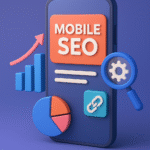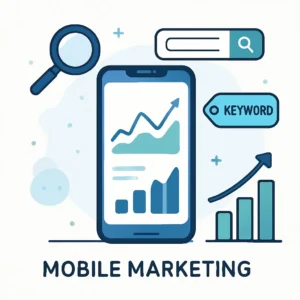

SAAS SEO vs Traditional SEO
In today’s digital landscape, search engine optimization (SEO) is one of the most critical strategies for online visibility and customer acquisition. However, not all SEO strategies are created equal. Depending on the type of business, the approach to SEO may differ significantly. For businesses offering software as a service (SAAS), SEO looks quite different from traditional SEO approaches.
In this article, we will break down the distinctions between SAAS SEO and traditional SEO, focusing on their unique strategies, challenges, and opportunities. Understanding these differences is essential for choosing the right SEO strategy that aligns with your business model and goals.
Table of Contents
ToggleWhat is SAAS SEO?
SAAS SEO refers to the specific SEO strategies used to market software as a service (SAAS) products. SAAS companies sell cloud-based software, and their revenue often relies on a subscription-based model. Unlike traditional businesses, which may offer a wide range of products or services, SAAS companies typically focus on one or a few specialized software solutions.
In the highly competitive SAAS industry, search engine rankings can make or break a business. SAAS SEO is designed to drive organic traffic to the company’s website, where users are encouraged to sign up for free trials, demos, or subscriptions. The ultimate goal is to convert visitors into paying customers.
What is Traditional SEO?
Traditional SEO, on the other hand, refers to the SEO strategies employed by non-SAAS businesses. These could include eCommerce websites, local businesses, blogs, news websites, and more. The core goal of traditional SEO is to drive traffic to a website and boost visibility, leading to sales, engagement, or awareness.
While traditional SEO also focuses on optimizing a website for search engines, the business models and customer journeys in traditional SEO tend to be more varied compared to the SAAS model. Depending on the type of business, SEO goals can range from brand awareness and lead generation to direct sales and customer retention.
SAAS SEO VS Traditional SEO
1. Sales Cycle and Conversion Goals
The sales cycle in SAAS SEO is typically longer and more complex compared to traditional SEO.
SAAS SEO customers often need to evaluate the software through free trials or product demos before making a purchasing decision. Therefore, SAAS SEO strategies often focus on driving high-quality, targeted traffic that can eventually convert into paying customers through a nurturing process.
Traditional SEO, especially for eCommerce and direct-to-consumer businesses, often has a shorter sales cycle. Customers may find a product, read reviews, and make a purchase relatively quickly. In these cases, SEO strategies often focus on optimizing product pages and driving transactional traffic.
Example:
- SAAS SEO: A software company offering project management tools might use SEO to drive users to their website, offering a free trial or demo.
- Traditional SEO: A retail business might focus on driving traffic to product pages to encourage immediate purchases.
2. Keyword Strategy
In Traditional SEO, keyword strategies often target high-traffic, purchase-intent keywords. These are broad, commercial keywords aimed at capturing a wide audience looking for products or services.
SAAS SEO, on the other hand, places more emphasis on long-tail, niche, and informational keywords that cater to specific stages of the customer journey. In the SAAS world, potential customers are often conducting research and comparing solutions before making a decision. As a result, SAAS SEO needs to focus on content that educates and provides value.
Example:
- SAAS SEO Keyword Strategy: A project management software company might target keywords like “best project management software for small teams” or “how to improve project workflows.”
- Traditional SEO Keyword Strategy: An online shoe store might target keywords like “buy running shoes online” or “best running shoes for men.”
3. Content Marketing Approach
Content marketing plays a significant role in both SAAS SEO and traditional SEO, but the content type and purpose differ.
In SAAS SEO, content marketing is often educational and aimed at solving customer pain points. SAAS companies produce a wide range of content types such as blogs, case studies, webinars, whitepapers, and video tutorials.
Traditional SEO focuses on various content types too, but the goal is often more product or service-oriented. For instance, eCommerce websites may focus on product descriptions, reviews, buying guides, and how-to articles. While traditional businesses may also offer educational content, the emphasis is more on persuading customers to make a purchase rather than nurturing long-term relationships.
Example:
- SAAS SEO Content: A blog post explaining the benefits of cloud-based project management tools or a detailed case study on how a business improved productivity using a specific software.
- Traditional SEO Content: A buying guide comparing different types of shoes for different athletic needs or a product review focused on a specific brand of shoes.
4. Technical SEO
Both SAAS SEO and traditional SEO require technical SEO, but SAAS websites often face more complex technical challenges.
SAAS SEO websites are usually feature-rich and contain dynamic elements, which can impact page load speed and crawlability. Ensuring that these websites are fast, secure, and mobile-friendly is crucial to achieving higher search engine rankings.
Traditional SEO also requires strong technical SEO, but eCommerce and local businesses may have more straightforward requirements. Their focus is often on optimizing product pages, ensuring website security, and implementing schema markup to improve visibility in search engines.
5. User Experience (UX) and Conversion Rate Optimization (CRO)
SAAS SEO places a strong emphasis on user experience and conversion rate optimization (CRO). Since the goal is to convert website visitors into trial users or paying customers, the website’s design, user interface, and overall experience are paramount. SAAS websites often invest heavily in CRO techniques, including A/B testing, personalized content, and customer journey mapping.
In traditional SEO, user experience is still important, but the primary focus is often on product pages and checkout processes. eCommerce businesses, for example, may focus more on ensuring a smooth and secure checkout experience rather than extensive user nurturing.
6. Link Building Strategies
Both SAAS and traditional SEO benefit from strong backlink profiles, but the approach to link building can differ.
SAAS companies often focus on building relationships within the tech industry, gaining backlinks from industry influencers, blogs, and tech review websites. They also tend to publish authoritative content that naturally attracts backlinks over time.
Traditional businesses may focus more on acquiring backlinks from industry publications, bloggers, and local business directories. Local SEO, in particular, often requires citation building and backlinks from local directories, news outlets, and community websites.
Conclusion: Which SEO Approach is Right for You?
Both SAAS SEO and traditional SEO have their unique strategies and challenges, and the best approach depends on your business type and goals. SAAS businesses must focus on educational content, longer sales cycles, and nurturing potential leads through trials and demos. Traditional SEO, on the other hand, focuses on product-centric strategies, shorter sales cycles, and direct transactions.
Understanding the differences between these SEO approaches can help you design a more effective SEO strategy, whether you are marketing a SAAS product or running a traditional business. By tailoring your SEO efforts to the specific needs of your business, you can maximize your online visibility, drive traffic, and ultimately boost conversions.
Related Posts
tlover tonet
I simply couldn’t leave your site prior to suggesting that I really enjoyed the standard information a person provide on your guests? Is gonna be again regularly to investigate cross-check new posts.






















3 comments